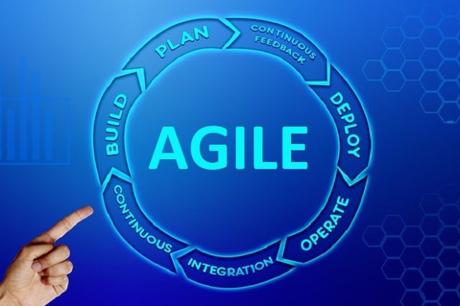
An agile business framework is one that brings several important benefits. An agile business framework means that you're able to deliver the best products and services to your customers and focus on the customer experience without spending too much.
You have a business that can also easily shift and evolve if there's a need, or feedback indicates that's best.
An agile business isn't one where you're going to have to put any massive investment toward any one thing, but you can instead do things incrementally with a faster return on any investments and less of an impact if something fails.
So while all that sounds great, how do you actually make your business more agile?
Agile IT Foundation
Before you can do anything else as far as an agile framework, you need to have a strong IT and technology foundation from which to work.
If you choose an IP address management solution such as Microsoft IPAM, it gives you the opportunity to manage your servers and integrate automation in a way that will ensure your network is secure, reliable and scalable.
Once you have automation within your IT framework, it's going to automate a lot of your administrative processes so you can then look at other areas of efficiency and agility within your business.
Along with making sure you have the right technology, sometimes agility can be just as much about maximizing the use of existing technology.
For example, allowing employees to bring their own mobile devices to work can improve agility as well as efficiency.
Delegation
Once you have a strong IT and technology foundation in place, you can move on to other areas of agility.
An agile business is one where delegation is essential.
You have strong employees who are capable of operating in different capacities. This can require cross-training and ongoing training.
The difference between an agile business and one that's not is often that in a non-agile business, employees are trained as part of onboarding and then never again.
Agility requires learning different roles to be able to move around within the business and continuouslearning.
Your employees should be comfortable with creative thinking and problem solving, and they should be willing to take on a leadership role as necessary.
The overall goal if you want an agile business should be autonomous employees. They should feel comfortable making decisions as needed and staying in control of their own work.
Create Visibility
Agile businesses have a clear idea of where they want to go, what their specific strategy is to get there and also what they're doing at any given moment.
Business leaders and employees need to have visibility into current projects and where they stand, as well as what their role within those projects is.
Everyone needs to be able to see in real-time what's happening where.
This helps with prioritizing and reviewing work as it's occurring.
Certain platforms promote agile visibility and communication as well, so you might want to think about using one of these dashboards.
Focus on Creating Value
A lot of the work you're doing in an agile business is going to be centered on creating value. Many agile organizations follow the 80/20 rule.
This means that 20% of the workbeing done delivers 80% of the overall value.
Your entire team should be focusing on working on the projects and solutions that deliver the highest return on investment.
By being able to prioritize the most valuable work, you also get it done more quickly.
Encourage Collaboration
As was mentioned, cross-training employees is integral to agility, and so is communication across departments. You want your employees to have simplified ways to communicate and collaborate when necessary to come up with the best possible solutions.
Agility is an environment that welcomes not only collaboration but feedback and continuous improvement.
What you'll often see in businesses that aren't agile in their framework is there are departmental silos and bottlenecks when it comes to collaboration and communication.
Break them down and get people working together.
Finally, in an agile business, there are inevitably failures. Failure is valuable in an agile framework because it allows you to see where changes need to be made.
The failures need to be manageable and small, however. Since you're learning as you go, small failures along the way provide the ideal opportunity for new analysis and incremental improvements rather than relying on massive make-or-break moments. Fail, learn, and change along the way.


